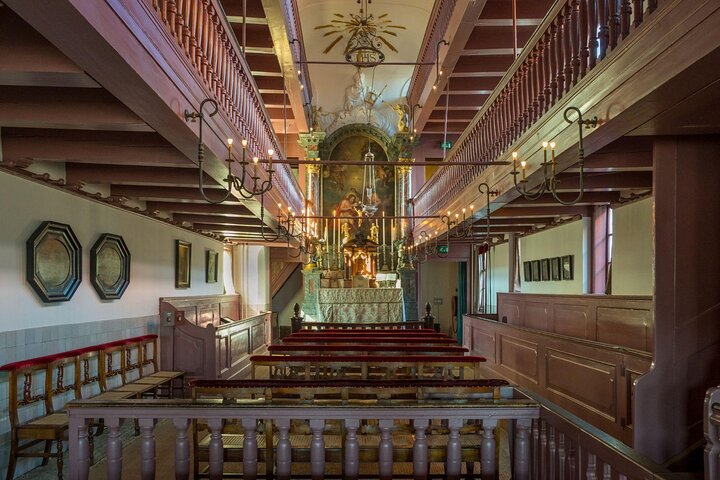The Secret of Amsterdam's Hidden Churches
In the heart of Amsterdam, behind unassuming facades, lie some of the city's most intriguing architectural marvels: the hidden churches. These clandestine places of worship, known as "schuilkerken," were ingeniously designed during the 17th century when public Catholic worship was prohibited. One of the most famous is the "Ons' Lieve Heer op Solder," or "Our Lord in the Attic," a church concealed within a canal house.
Ingenious Design in Tight Spaces

The architecture of these hidden churches is a testament to creativity under constraint. "Our Lord in the Attic" occupies the top three floors of a typical narrow canal house. The church's design cleverly maximizes space, with a central nave flanked by galleries. The altar, adorned with Baroque details, is squeezed into the attic, creating an intimate yet grand atmosphere. The use of light wells and strategically placed windows ensures the space is both bright and airy, despite its confined location.

A Blend of Functionality and Aesthetics

The hidden churches of Amsterdam are not only functional but also aesthetically pleasing. The interiors often feature elaborate woodwork, intricate paintings, and ornate altars. These elements were designed to inspire and uplift the congregation, providing a stark contrast to the plain exteriors. The "Begijnhof Chapel," another hidden gem, showcases beautiful stained glass windows and a richly decorated altar, all hidden behind a modest entrance.
Preservation and Modern-Day Access
Today, many of these hidden churches have been preserved as museums, allowing visitors to step back in time and experience their unique architecture. "Our Lord in the Attic" is now a museum open to the public, offering a glimpse into the religious and social history of Amsterdam. The preservation efforts ensure that these architectural wonders continue to be appreciated by future generations.
The Cultural Impact of Hidden Churches
The existence of these hidden churches highlights the resilience and adaptability of Amsterdam's Catholic community during a time of religious oppression. They serve as a reminder of the city's complex history and the lengths to which people will go to practice their faith. The hidden churches are a unique aspect of Amsterdam's cultural heritage, offering insights into the city's past and its architectural ingenuity.










